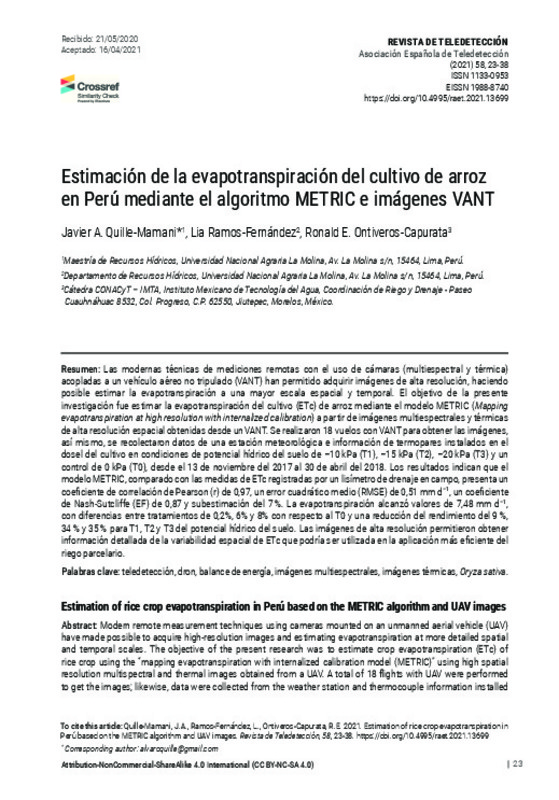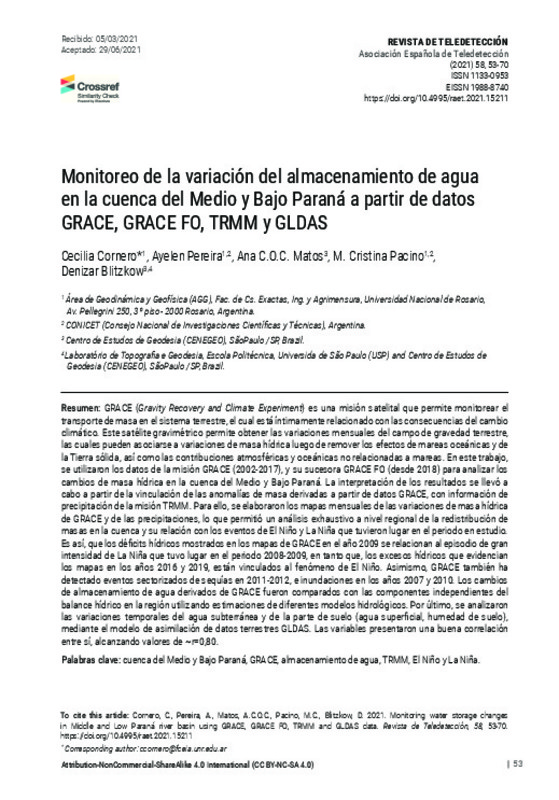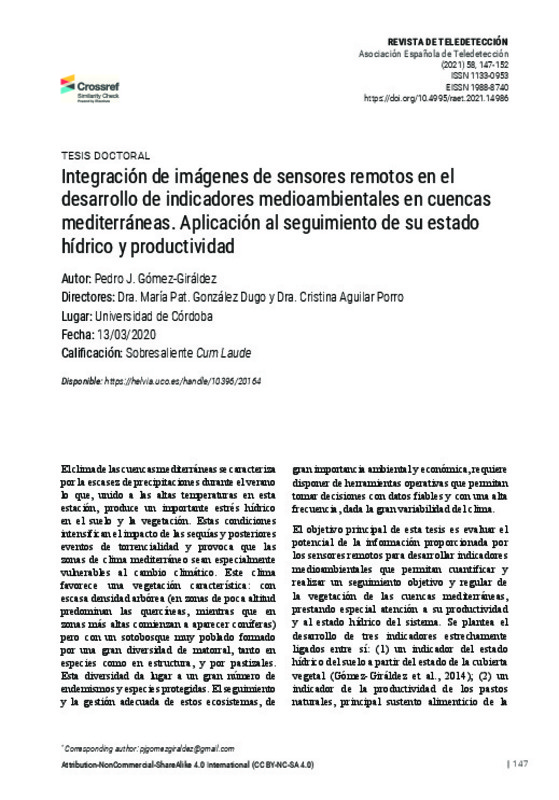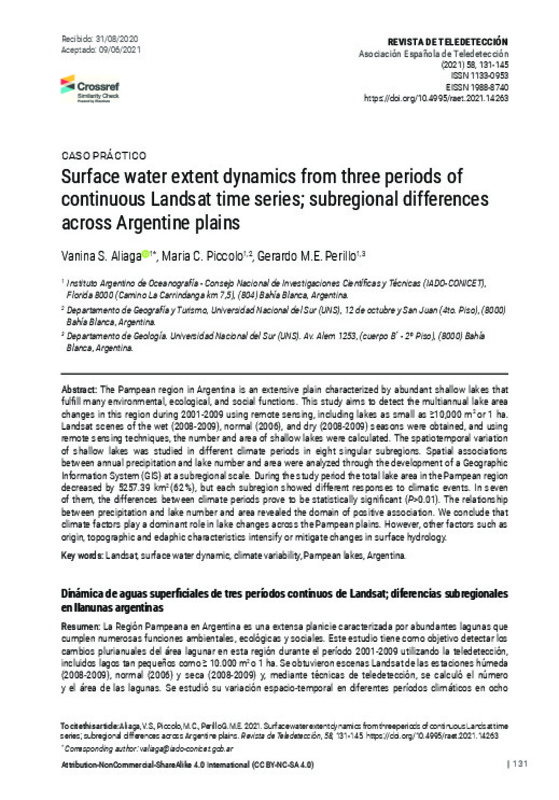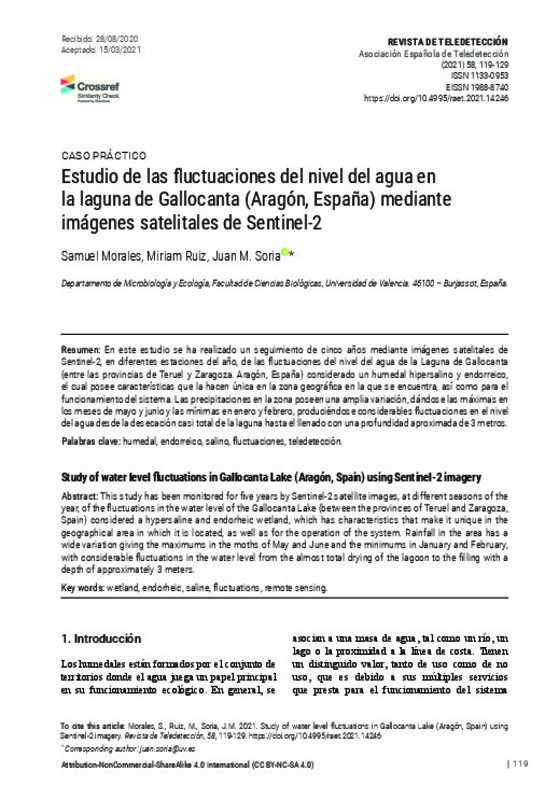- RiuNet repositorio UPV
- :
- Investigación
- :
- Material investigación. Editorial UPV
- :
- Revistas UPV. Editorial UPV
- :
- Revista de Teledetección
- :
- Revista de Teledetección - Núm. 58 (2021)
JavaScript is disabled for your browser. Some features of this site may not work without it.
Refinar
Desde el lunes 3 y hasta el jueves 20 de marzo, RiuNet funcionará en modo de solo lectura a causa de su actualización a una nueva versión.
Revista de Teledetección - Núm. 58 (2021)
Tabla de contenidos
Artículos de investigación
- Determination of land surface temperature using Landsat 8 images: Comparative study of algorithms on the city of Granada
- Estimation of rice crop evapotranspiration in Perú based on the METRIC algorithm and UAV images
- Mapping Sandy Areas and their changes using remote sensing. A Case Study at North-East Al-Muthanna Province, South of Iraq
- Monitoring water storage changes in Middle and Low Paraná river basin using GRACE, GRACE FO, TRMM and GLDAS data
- Evaluation of classification algorithms in the Google Earth Engine platform for the identification and change detection of rural and periurban buildings from very high-resolution images
- Evaluation of segmentation parameters in OBIA for classification of land covers from UAV images
Casos prácticos
- Application of a simplified methodology to estimate reservoir capacity curves
- Study of water level fluctuations in Gallocanta Lake (Aragón, Spain) using Sentinel-2 imagery
- Surface water extent dynamics from three periods of continuous Landsat time series; subregional differences across Argentine plains
Tesis doctorales
- Integration of remote sensing images in the development of environmental indicators in Mediterranean basins. Application for monitoring water status and productivity



